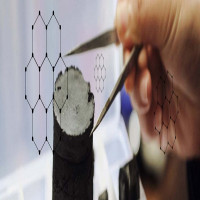Nitrogen-doped Graphene: Synthesis, Characterizations and Applications

Strong 8k brings an ultra-HD IPTV experience to your living room and your pocket.
N-graphene is a graphene derivative that has nitrogen atoms embedded in the graphene lattice. The presence of nitrogen atoms changes the electronic properties of graphene and modifies its surface chemistry, making it a versatile material. N-graphene can be synthesized using various methods, including chemical vapor deposition (CVD), thermal annealing, and chemical reduction. The nitrogen doping level and distribution in the graphene lattice depend on the synthesis method used.
Nitrogen-doped Graphene: Synthesis, Characterizations and Applications
Synthesis Methods of Nitrogen-doped Graphene
Chemical Vapor Deposition (CVD) Method
CVD is commonly used to synthesize N-graphene due to its simplicity and scalability. In the CVD method, a metal catalyst is used to catalyze the decomposition of a nitrogen-containing precursor, such as ammonia or pyridine, which leads to the formation of N-graphene. The nitrogen doping level can be controlled by adjusting the concentration of the nitrogen precursor gas during the CVD process. The resulting N-graphene can be transferred onto any desired substrate for further applications.
Thermal Annealing Method
Another method for N-graphene synthesis is thermal annealing, which involves heating graphene in the presence of a nitrogen-containing gas. This method can modify the graphene surface without introducing defects into the graphene lattice, leading to high-quality N-graphene.
Chemical Reduction Method
Chemical reduction is another method that can be used to introduce nitrogen into the graphene lattice. In this method, a nitrogen-containing precursor is added during the reduction process, allowing nitrogen atoms to bond with carbon atoms in the graphene lattice. This results in the formation of N-graphene with a controlled degree of nitrogen doping.
Plasma-assisted Methods
In addition, plasma-assisted methods such as plasma-enhanced chemical vapor deposition (PECVD) and plasma immersion ion implantation (PIII) can also be used for the synthesis of N-graphene. These methods use plasma to ionize nitrogen-containing gases and accelerate them towards a graphene surface, resulting in the deposition of N-graphene with a high degree of nitrogen doping.
Overall, these various methods for N-graphene synthesis offer a range of approaches for achieving the desired level of nitrogen doping and degree of surface modification, providing a versatile platform for developing new applications for this exciting material.
Characterizations Techniques of Nitrogen-doped Graphene
The successful synthesis of N-graphene depends on the uniform and controlled doping of nitrogen atoms into the graphene lattice, which can be achieved through various methods such as chemical vapor deposition, thermal annealing, and electrochemical reduction. Once synthesized, the N-graphene can be characterized using numerous techniques such as X-ray photoelectron spectroscopy (XPS), Raman spectroscopy, scanning electron microscopy (SEM), and transmission electron microscopy (TEM).
X-ray Photoelectron Spectroscopy (XPS)
XPS is a powerful technique used to determine the chemical composition of N-graphene and has been used to confirm the presence of nitrogen atoms in the lattice. Furthermore, the binding energy of the nitrogen atoms can provide information about the type of nitrogen incorporated into the graphene lattice, such as pyridinic, pyrrolic, and graphitic nitrogen.
Raman Spectroscopy
Raman spectroscopy is another widely used technique, which can be used to determine the structural properties of the N-graphene, including the degree of crystallinity, defects, and the doping level.
SEM and TEM
SEM and TEM can be used to visualize the morphology and structure of the N-graphene, with TEM providing sub-nanometer resolution images, which can be used to closely examine the graphene layers. TEM can also be used to quantify the number of nitrogen atoms incorporated into the graphene lattice, as well as any defects, which can influence the electronic and mechanical properties.
Applications of Nitrogen-doped Graphene
Energy Storage
In the field of energy storage, N-graphene has shown potential as an electrode material for lithium-ion batteries, as it can increase their capacity and reduce their charging time. It can also be used in supercapacitors, which have high power density and can charge and discharge quickly.
Catalysis
In catalysis, N-graphene can act as a catalyst in various chemical reactions, such as the reduction of pollutants in wastewater treatment and the conversion of CO2 to useful chemicals.
Sensing
N-graphene's high surface area and sensitivity to gas molecules make it a promising material for sensing applications. It can detect gases such as ammonia, nitrogen oxides, and carbon monoxide with high sensitivity and selectivity.
Electronics
Lastly, N-graphene's excellent electrical and thermal conductivity make it a potential candidate for electronic devices, such as transistors, sensors, and photodetectors.
Overall, N-graphene has a wide range of potential applications due to its unique properties and could greatly impact various industries in the future.
Note: IndiBlogHub features both user-submitted and editorial content. We do not verify third-party contributions. Read our Disclaimer and Privacy Policyfor details.


